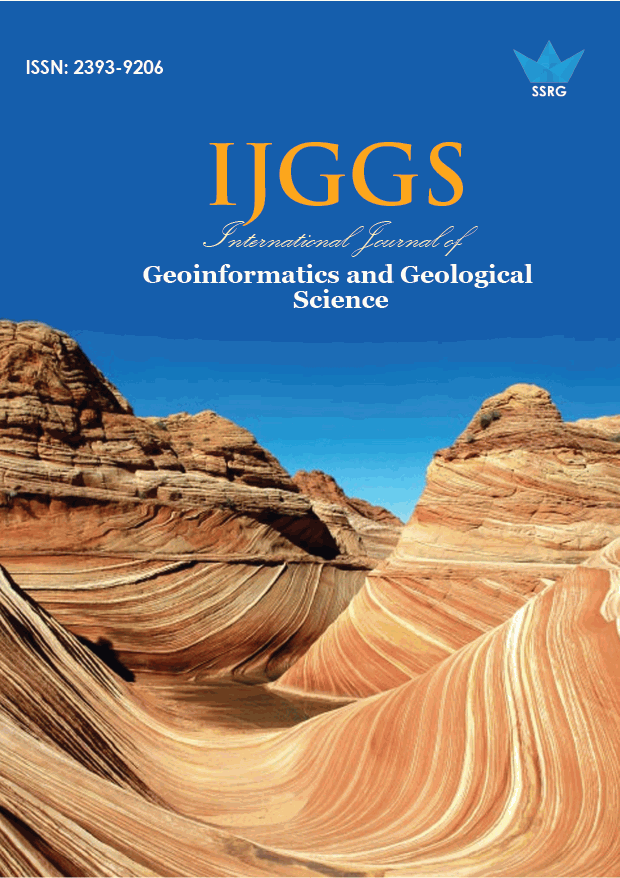Quantifing Model Uncertainity to Improve Stream Flow Prediction for Geba Cathment, Upper Tekeze Sub basin, Ethiopia

| International Journal of Geoinformatics and Geological Science |
| © 2019 by SSRG - IJGGS Journal |
| Volume 6 Issue 3 |
| Year of Publication : 2019 |
| Authors : Abebe Temesgen Ayalew |
How to Cite?
Abebe Temesgen Ayalew, "Quantifing Model Uncertainity to Improve Stream Flow Prediction for Geba Cathment, Upper Tekeze Sub basin, Ethiopia," SSRG International Journal of Geoinformatics and Geological Science, vol. 6, no. 3, pp. 48-53, 2019. Crossref, https://doi.org/10.14445/23939206/IJGGS-V6I3P108
Abstract:
This study was conducted to predict stream flow at the outlet of the gauged Geba watershed and analyze the associated uncertainty that can affects its accurate prediction. Semi distributed HBV light model was a0pplied to estimate stream flow of the Geba catchment and associated uncertainty through Monte Carlo Simulation procedure. The calibration and validation of the model was found satisfactory as performance rating criteria value of coefficient of correlation (R2) and Nash-Sutcliffe simulation efficiency (ENS) is found to be 0.74 and 0.72 for calibration and 0.73 and 0.70 for validation ,respectively. In the same order from the model uncertainties analysis the percentage of the simulated data within the uncertainty bound is only 35% for calibration and 29% for validation, which shows that there is uncertainty in the process. Then using Monte Carlo Simulation procedure in HBV light model parameter uncertainty was tested and found with ENS value of 0.76 for calibration and 0.79 for validation. And this shows that the overall associated uncertainty come from either from conceptual or inputuncertainity or combination of them but not from parameter identification.Even though the predicted amount of flow of 955.33MCM is almost equivalent to the latest study, the uncertainty might come due to either neglected abstractions or poor quality of input data. Therefore, this simulated amount should not be used for any water resource development works unless the correction of these cause of uncertainties are reduced as uncertainty in estimation of simulated flow will lead to wrong water resource management decision.
Keywords:
ERDAS, Flow Prediction, Geba Cathment, HBV Light, Model Uncertainty
References:
[1] Abbaspour. (2009). SWAT-CUP2: SWAT Calibration and Uncertainty Programs. In A User Manual. Department of System Analysis, Integrated Assessment and Modeling (SIAM), Eawag, Swiss Federal Institute of Aquatic Science and Technology (p. 95). Duebendorf, Switzerland.
[2] Abraha. (2009). Assessment of spatial and temporal variability of river discharge, sediment yield and sedimentfixed nutrient export in Geba River catchment, northern Ethiopia. PhD thesis, Katholieke Universiteit Leuven, Belgium.
[3] Birhane et al. (2013). Estimation of monthly flow for ungauged catchment (Case Study Baro - Akobo basin) Ethiopia. MSc thesis. Addis Ababa University, Ethiopia.
[4] Finicia et al. (2008). Understanding catchment behavior through stepwise model concept improvement, Water Resour. Res., 44, W01402, doi: 10.1029/2006WR005563.
[5] Gebre yohannes et al. (2010). Large-scale geological mapping of the Geba basin, northern Ethiopia [Tigray Livelihood Papers; 9].
[6] Gonfa. (1996). Climate classification of Ethiopia. Addis Ababa, Ethiopia.
[7] Hundecha. (2005). regionalization Parameters of Conceptual Rainfall - Runoff Model, University of Stuttgart Germany.
[8] IHMS. (2006). ''Integrated Hydrological Modeling System Manual.'' Version 5.1.
[9] Iuliia et.al. (2014). Simulating Water Resource Availability under Data Scarcity—A Case Study for the Ferghana Valley (Central Asia). 6, 3270-3299.
[10] Kumela. (2011). performance comparsion of rainfall runoff model on Muger cathment,abay basin, M.Sc. Thesis, addis
ababa,ehiopia.
[11] Moreda. (1999). Conceptual Rainfall-Runoff Models for Different Time Steps with Special Consideration for Semiarid and Arid Catchments Laboratory of Hydrology and Inter-University Program in Water Resources Engineering.
[12] Wagener et al. (2003). towards reduced uncertainty in conceptual rainfall-runoff modeling: dynamic identifiability analysis, Hydrol. Processes. pp. 17(2), 455–476.

 10.14445/23939206/IJGGS-V6I3P108
10.14445/23939206/IJGGS-V6I3P108